Story by Cecilia Lönell & Photos by Jan Gyllenstan
Can you spot a good jumper on the ground?
The correlation between conformation and performance has been analysed and discussed by experts for hundreds of years. But how important is what is less obvious, the interior?
We asked some of the most successful riders of the last European World Cup season and the Athens Olympics to comment on their top horses good and bad points. Basically the horses were picked at random, although some as purely successful and some as examples of stars with less than ideal conformation with very good results.
As a group you can say that they correspond to our European Warmblood breeding goal; horses with Thoroughbred blood and – with some exceptions – long legged. Besides that they differ a bit, said Mari-Ann Barkevall, leading SWB judge and breeder. She viewed the conformation pictures with no clue to the identity of the horses except their level of competition.
“What they do have is well developed withers, so a good saddle area that puts the rider in the right place, and that is important. They also have a good depth of girth, so room for the lungs,” said Barkevall.
“The picture from the side is 30% of what I see. It can be a totally different horse when it starts moving. There are horses with poor conformation that have more heart than body,” she said.
“Horses are after all not bred to stand still, so function is in the end the most important,” she added. Like the riders she pointed out the importance of the horse’s natural self-carriage, and a good canter.
“If I had them at a grading, I would put the grey first and two of the chestnuts second and third,” Barvevall said of Gitania, Coleur Rubin and Baloubet. Her ranking fitted very well with the riders own. Among the horses down the imaginary line-up was Shutterfly for being too light of bone.
Noticeable among this small selection is that the horses described by their riders as having the best type, were also said to have the best rideability – with the possible exception of Baloubet, due to his extremely lively temperament. What is striking is that irrespective of conformation, rider after rider stresses that his horse has a very good attitude to the job, and a lot of character.
Whether the best showjumpers have certain conformational traits is a research subject that has produced many conflicting answers. The career of any sporthorse is aided by staying sound. Swedish horse genetics experts Lena Wallin and Jan Philipson have shown that horses with high conformation scores in the Swedish ”Quality Tests” for 4-year-olds have a longer life expectancy, so less wastage. Soundness problems were by far the most common reason for early culling.
Swedish vet and researcher Mikael Holmström in a PhD thesis showed clear correlation between conformational traits and dressage talent, and developed his work with showjumpers and racehorses. In a comparison between 33 S- dressage horses, 28 S-level showjumpers and 100 riding school horses and 195 four year old test participants, the S-level horses were shown to have a bigger hock angle and a more sloping shoulder than the average horse.
He quoted French scientists who in the 70’s compared good and weak showjumpers. They found that the better horses had a broader “breast”, bigger girth circumference and a longer and broader pelvis. They also found that when trying to sort the good horses from the bad on the ground the judges were wrong with 25% of the horses.
In Germany Ludwig Christmann of the Hannoverian Verband has studied heritability and correlations between conformation, gaits and sports talent. He showed as other experts that loose jumping results (for young Hannoverian mares) have a high degree of heritability. Dr Christmann also showed (as others have) a clear correlation between dressage talent and points for gaits and rideablity, that was less obvious for the jumping talents – in fact he found a negative correlation between all the high scores for conformation and later jumping ability. However, he believes there are enough horses that both jump better than average and have a good type for it to be possible to both breed jumpers and improve the type.
Gitania
Holstein mare b 92 : Capitol I-Sacramento Song xx
Bronze in the 2005 World Cup Final
Markus Ehning: ”She has a very good conformation and type. She is not so big, and quite compact. She is a bit smaller than a lot of other Capitols, and has more blood than they usually have. She has a very good temperament, wants to go without being too hot. She is a very easy horse to ride, cooperative, and not spooky. I see no drawbacks with her.”
Coleur Rubin
Oldenburg, stallion b 96 : Cordalmé-Grannus
Placed in the World Cup Final 2005
Ludger Beerbaum: ”Temperament-wise he is very nice, pleasant, soft and with self confidence. He is at the same time quite shy rather than tough, so he is easily influenced by his surroundings, but is easy to motivate and nice to ride, with good balance. His strength is more elasticity and rideability than power. He has a super canter, but his trot is not so good, he would get under average points for that in a dressage competition. But he has a decent walk. Conformation-wise he is fine, I can’t say anything particular about it, after all he passed the stallion approval when he was three.”
Selle Francais, stallion b 89 : Galoubet-Starter
Three-time World Cup champion, 7th in 2005
Rodrigo Pessoa: “He is quite a good model. What you maybe would like to see is a bit better neck, the line is a bit strange. He is a very intelligent horse and can jump any fence.”
Weak point? “Concentration, give me a bit more concentration, a bit more calm!”
Hannoverian gelding b 93 : Silvio-Forrest xx
World Cup champion 2005
Meredith Michaels-Beerbaum: “He is a very good model, very Thoroughbred type. He has scope and is careful. He is a very sensitive horse, extremely sensitive to sound, but strangely enough not when he is in the arena to jump, then he becomes totally focused. He is strong to ride and to turn, but has gone very well in a hackamore plus bit.”
Weakness? “I see no weak points in him”
Portofino
KPWN, mare b 94 : Habsburg-Orthos
Silver medallist World Cup final 2005
Michael Whitaker: ”Her type is not so good, heavy in front and a bit light behind. She is not much to look at. Through her build she is a bit ”downhill” to ride. But she has scope, a very good temperament, is careful and makes the effort. She has a lot of blood, more than you might think, and is hotter to ride than she looks.”
Cardento 933
Holstein, stallion b 91 : Capitol-Lord
Olympic team medallist Athens 2004
Peter Eriksson: “He is a big horse and yet not heavy, that is a good point. His owners VDL in Holland are amazed that he is so clean-legged, after all he has done. But I think it is because he is not heavy, and I make a point of riding on different surfaces, including quite firm ones such as dirt roads. He has good legs, with good angles. He has a lot of scope, and has never been spooky. Bad points ? Maybe that when he was young he took a long time to build muscle.”
Eve de Etisses
Selle Francais mare b 92 : Quidam de Revel-Pot d’Or xx
Won World Cup in Bordeaux 2005
Hubert Bourdy: “She has both qualities and problems. Conformation wise she is OK, but with a very short neck. She is big enough, although people think she is a small horse. On the plus side is that she is brave as hell. She will jump anything, is never afraid and never spooky. She has the scope to jump anything. She almost wants too much, can sometimes run without thinking.”
“Her weakness is her mouth. She is by Quidam and many of those have a bad mouth. When I got her she was really difficult. She has become much better and now I ride her in a mild pelham, but I have to change regularly as when she becomes used to a bit she gets too strong again. I think her short neck contributes to her being a difficult ride.
Butterfly Flip
SWB mare b 1991 : Robin Z-Moderne xx
Team medallist Athens Olympics 2005
Malin Baryard-Johnsson: “She has nothing really that is negative conformation wise. She is quite small, 163 cm, with a slightly hollow back. Then she is in fact not so beautiful to look at “naked”, but when she is tacked up, ridden and going well she is of course a very nice horse. By nature she keeps her head a bit high, a bit too high, but there is really nothing negative to say. She has a bit of a peculiar technique, especially behind, but that is no problem. She is scopey and careful.”
Weak point? ”Her problem is more in the head, but that is also what makes her win. What is positive is that she wants to go, she is a fighter. The negative is that she is easily stressed and sensitive..”


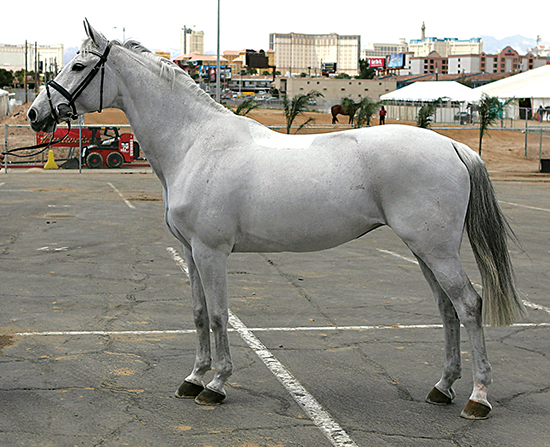
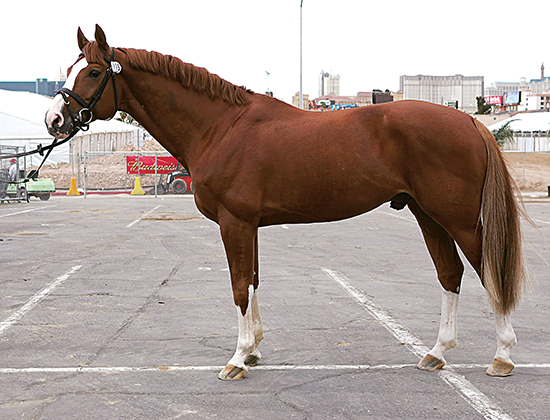
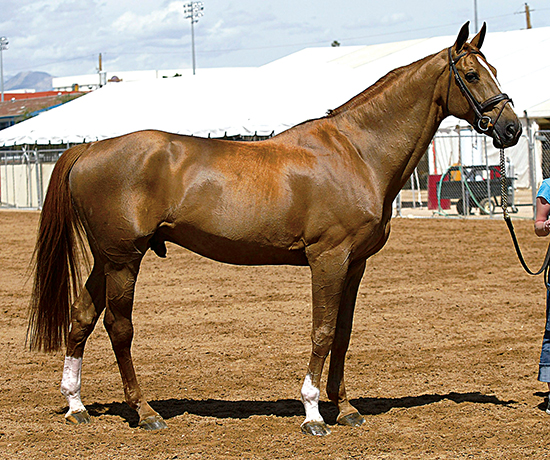
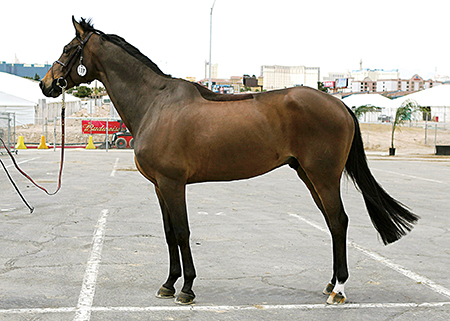
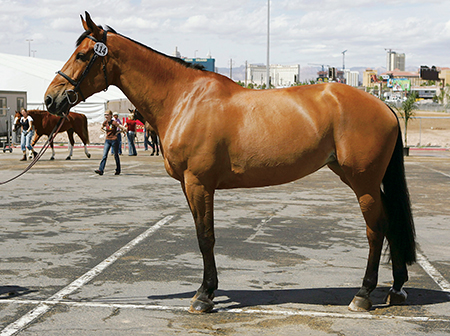
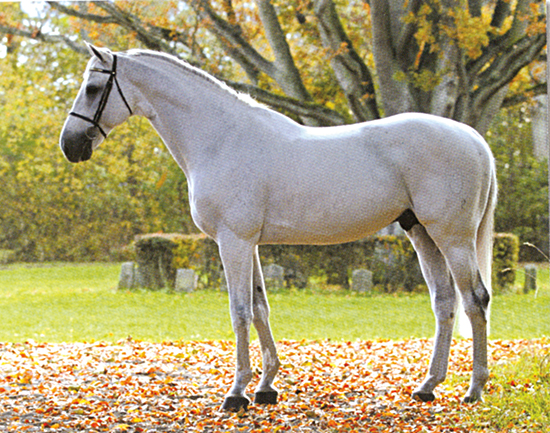
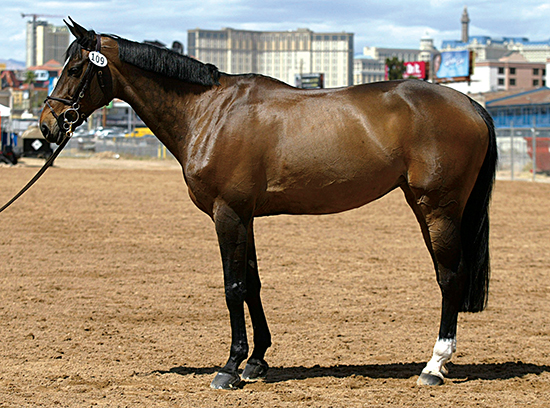
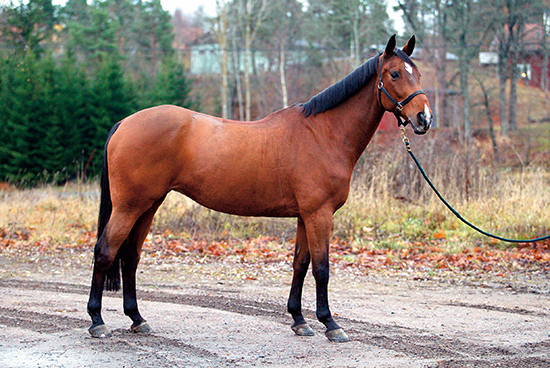
One thought on “Conformation and Performance”
Comments are closed.